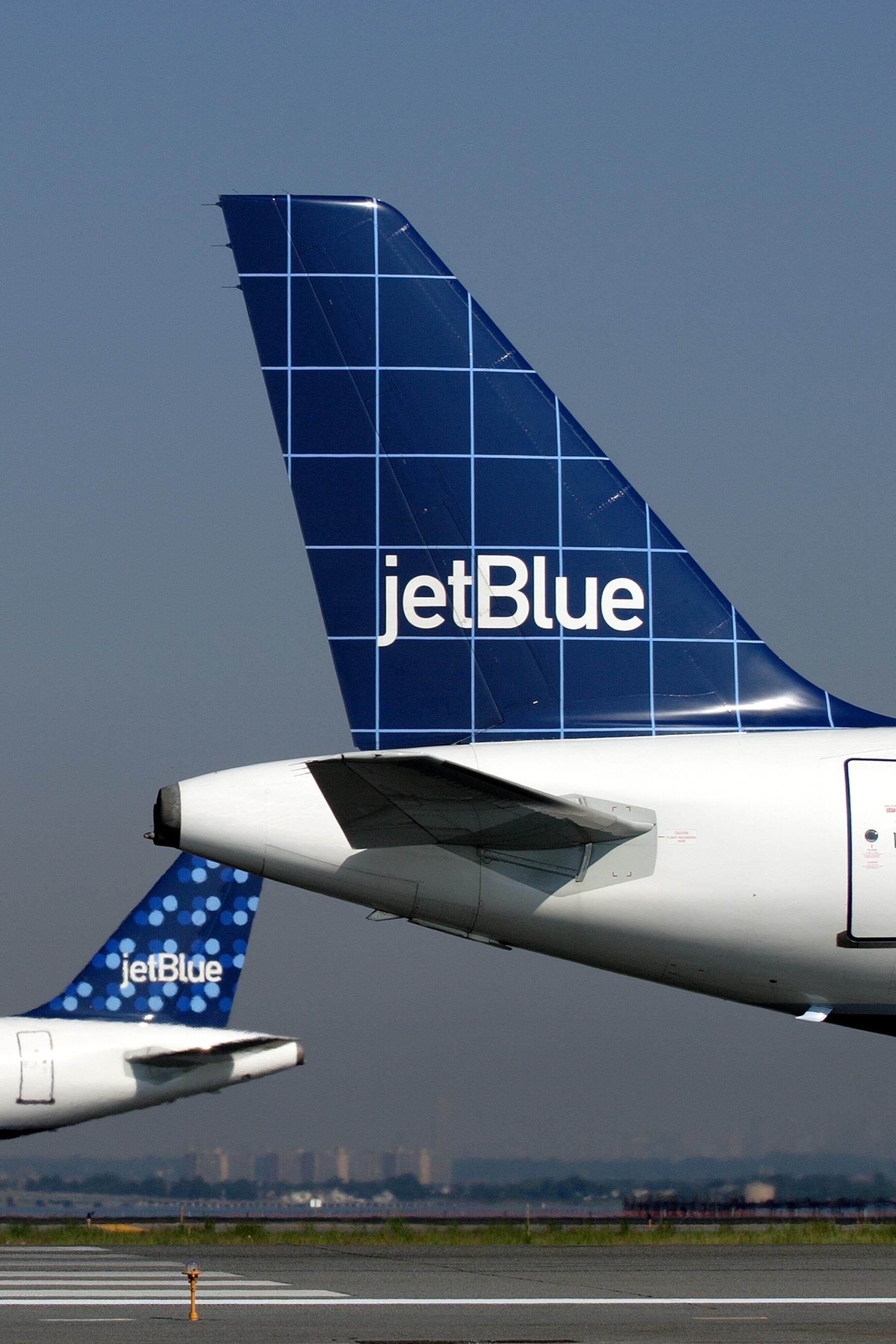
American Airlines and JetBlue Airways announced a Northeast U.S.-focused codeshare alliance, challenging Delta Air Lines in the highly competitive Boston and New York markets.
The agreement will enable reciprocal codeshares on more than 60 routes operated by American and 130 by JetBlue, subject to regulatory approval, in addition to loyalty benefits for customers. Together, the carriers hope to operate 489 daily flights to 120 destinations from the Greater New York area.
“Whatever future opportunities will be available to us in New York and the Northeast will be significantly greater now than they would have otherwise been because of our ability to tap into JetBlue’s strong local presence and connectivity,” American VP-network planning Brian Znotins said in an interview.
Fort Worth-based American plans to launch its first new international routes from New York JFK in over four years, which Znotins said “would not be possible” without the added feed from JetBlue. American will introduce new routes from JFK to Tel Aviv and Athens following the implementation of the alliance deal, while daily seasonal service to Rio De Janeiro will return in Winter 2021.
New York-based JetBlue, on the other hand, will add flights at LaGuardia and Newark, while expanding at its JFK home base.
“We used to fly to Tel Aviv from Philadelphia in the past, but that posed a difficult dilemma, because most passengers who want to go there are based in New York and we really didn’t have the connectivity there to support it,” Znotins explained. “Now, we can have our cake and eat it, too. JetBlue gives us the feed and connectivity that we need to be competitive and get back into that market we lost a few years ago.”
Athens is a similar story. “Traditionally, we have two Athens routes from Chicago and Philadelphia, but we’d love to go after those local New Yorkers looking for a nonstop flight,” Znotins said. “Honestly, we couldn’t do it successfully without that added feed from JetBlue.”
For American, the new partnership with JetBlue neatly parallels a recently announced West Coast-oriented alliance with Alaska Airlines. Kicked off in February just before the COVID-19 pandemic swept through North America, that arrangement was conceived to challenge Delta’s dominance in Seattle, while enabling American to plan new long-haul routes to Bangalore (India) and London relying on local feed from Alaska’s hometown stronghold.
“Doing these partnerships allows us to become more relevant to passengers in the West Coast and Northeast by bolstering ourselves with partner networks,” Znotins said. “It allows us to make fewer tough choices in our network, particularly in those coastal markets we are not as successful in that might otherwise see cuts.”
Delta Airport Consultants chief industry strategist William Swelbar sees American’s partnership strategy as a means to penetrate strategically important markets without incurring the considerable downside risk associated with organic growth, especially given the current low-demand environment.
“Teaming two airlines with strong customer followings on each coast just may prove to be a recipe one action short of a merger,” Swelbar said. “At this point, the Northeast U.S. and the West Coast are nowhere near back to being fully part of today’s traffic flows. But when they are, American will possess two very cost-effective paths to participate more fully in those flows.”
By partnering with JetBlue, American will greatly enhance its competitive position vis-a-vis Delta at JFK and Boston Logan airports.
JetBlue was the second largest airline by market share at JFK in the 12 months ending April 30, with a roughly 23% passenger share, behind Delta’s 30% share, according to data from the Port Authority of New York and New Jersey. Combined with American’s own roughly 10% share, the two carriers would control a third of all passenger traffic at the airport.
JetBlue is also the largest operator at Boston Logan, with a nearly 33% share of all passenger traffic in the 12 months ending Feb. 29, according to data from the U.S. Bureau of Transportation Statistics. American was the second-largest airline there with an 18% share, while Delta’s share was 15%.





